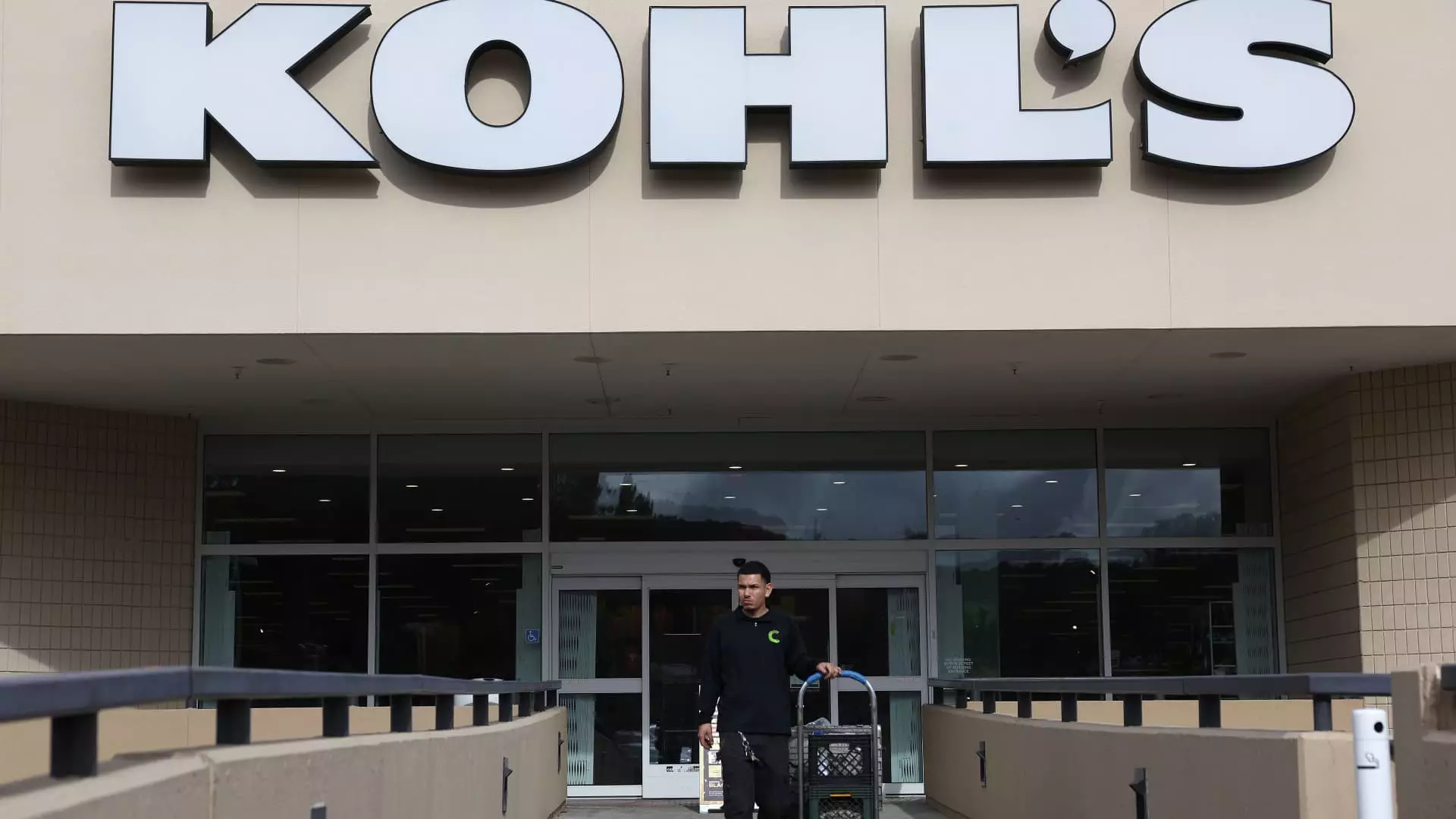Kohl’s recent quarterly report may have initially showcased a façade of success with earnings and revenue that surpassed analyst expectations. However, the dissonance between these figures and the stark guidance for the year ahead reveals a much darker narrative. A staggering plunge of more than 15% in share prices following the announcement paints a grim picture of the retailer’s future prospects. The forecast of a revenue decline ranging between 5% and 7% against Wall Street’s more optimistic 1.6% reduction uncovers the underlying challenges Kohl’s is grappling with as it navigates an increasingly tumultuous retail environment.
The alarming expectation that Kohl’s expects comparable sales to drop between 4% to 6%—significantly worse than the anticipated modest decrease—displays a worrying trend. This contradiction between consumer sentiment and corporate performance suggests that the company may be missing a vital link in connecting with its customer base. While the numbers tell a part of the story, they cannot mask the unsettling reality of the brand’s decline, which is largely self-inflicted.
A CEO Acknowledges Past Mistakes
In a striking admission, new CEO Ashley Buchanan highlighted a failure to focus on core product offerings. His acknowledgment that the company has strayed from what its customers truly value—fine jewelry and proprietary clothing—points toward an unsettling trend towards misplaced priorities. By attempting to innovate in new categories at the cost of these staples, the company may have alienated its loyal customer base, as Buchanan observed during his store visits.
This focus on innovation, rather than doubling down on the brand’s strengths, led to a decline in customer satisfaction. Buchanan succinctly put it: “We’re kind of making it hard for them to love us.” This revelation emphasizes the imperative need for Kohl’s to recalibrate its consumer strategy. Sustaining a loyal customer base in a highly competitive retail landscape requires a consistent investment in what customers love, not just what might look good on paper.
A Costly Love Affair with Discounts
Another critical area where Kohl’s has faltered is its discount strategy, particularly concerning coupon participation. In an ill-advised move, the retailer excluded numerous brands from its promotions, causing frustration among shoppers and likely leading to an aversion to the brand. Such customer alienation, particularly during tough economic times, signals a disconnect between what consumers value and what the company is offering.
In a landscape ravaged by inflation, customers are more cautious about their spending habits. They are seeking value—not just temporary deals but a genuine commitment to their preferences. By now recognizing the detrimental impact of brand exclusions, Kohl’s has an opportunity to rectify past mistakes, albeit with some difficulty, as trust is easily lost but hard to regain.
Facing the Reality of the Market
The broader economic challenges that Kohl’s faces cannot be dismissed. The looming specter of a possible recession, coupled with weakening consumer confidence, paints an ominous outlook for the retail sector as a whole. As the company struggles with its transformation, external variables like fluctuating unemployment and economic policies provide a complex backdrop against which it must operate.
With many Kohl’s stores reporting healthy operations, it is crucial to note the potential ramifications of looming lease expirations. While current circumstances may be stable, the prospect of renegotiating leases could further impact operational efficiency amid a market that has already displayed tendencies towards volatility.
The E-commerce Conundrum
Interestingly, while Kohl’s reflects on its in-store performance, the digital segment—crucial for survival in modern retail—continues to lag. The decline in online sales, particularly in areas like home products, indicates that even established partnerships—such as with Sephora—cannot mask the overarching struggles in a fast-evolving retail environment. The partnership may have spurred beauty sales growth, but it also underscores a singular dependency on one segment that may not sustain long-term profitability.
This juxtaposition between strong physical in-store sales and disappointing digital outcomes raises questions about the company’s capability to implement an omnichannel strategy that genuinely caters to evolving consumer preferences. Today’s shoppers want seamless integration between their online and physical shopping experiences, a need Kohl’s seems to be struggling to fulfill.
In the volatile landscape of retail, where a constant recalibration of strategies is essential for survival, Kohl’s appears to be at a pivotal juncture that demands agile responses and renewed focus on core competencies. As the company faces its own self-inflicted wounds, the bigger question remains—can Kohl’s rekindle the love from its loyal customers and refine its approach before it becomes another retail casualty?

